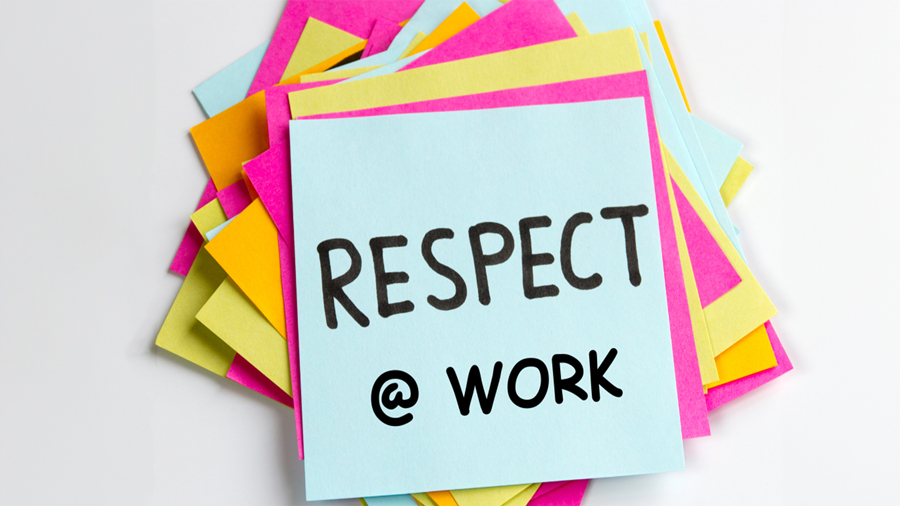Is Your Workplace Safe from Harassment?
Use the following list as a starting point to determine if your workplace has the right policies and practices in place to effectively prevent harassment:
- Do you conduct employee satisfaction surveys, or have other instruments to get a sense of what employees may be feeling about issues around harassment?
- Do you get a sense from managers, directors, and employees that your workplace culture reinforces a harassment-free environment?
- Do your employees seem satisfied? Are your recent employee satisfaction surveys positive?
- Do the survey results point to a problem over a culture issue in your workplace? Do survey comments refer to bullying or harassment?
- Do you have easily accessible harassment policies for all employees?
- Do you provide yearly training for all employees on harassment?
- Do you provide yearly training for all employees on respect?
- Have there been recent employee harassment complaints?
- Do managers know what to do during a harassment investigation?
- Do managers know what to do after a harassment investigation?
- Have you reviewed recent exit interviews to understand the reasons employees leave the organization?
Dealing With Workplace Harassment
Most of us are aware of harassment, particularly the challenging question of how to deal with it in the workplace. It is essential to know if your workplace unknowingly tolerates harassment.
Harassment, depending on how serious it is, can have devastating short-term or long-term effects on individuals in the workplace, whether the harassment is sexual, psychological or personal.
A recent Canadian study has shown that 71.4 per cent of workers have experienced at least one form of harassment in the workplace. Given its potential costs and impacts in the workplace, we need to understand what harassment is, and what it isn’t.
Definition of Harassment
In Ontario, and generally in the rest of Canada and much of North America, harassment is defined as “a course of vexatious comment or conduct that is known, or ought reasonably to be known, to be unwelcome.”
Vexatious conduct is deliberately aimed at a person or group for the purpose of irritating, disquieting, agitating or troubling them. Harassment can take many forms—sexual, verbal, online, bullying—and can include actions taken to sabotage someone’s performance at work or to intimidate or discomfit them.
Who can be a Harasser?
Anyone in the workplace can be a harasser, including a person’s supervisor, co-workers, or someone outside the organization (a client or supplier). In essence, a harasser is a bully, attempting to exert control over others against their will through varying degrees of intimidation.
Scenario: Teasing is harassment
Rada just started working at an internet provider’s call centre. On Monday, she is tasked with making cold sales calls. However, she has not yet learned about all the services they provide. She is uncomfortable making the initial calls because she knows her co-workers can hear everything. During her first few calls, Rada notices that the other agents are silent. Then she starts to hear snickering and her voice being imitated. This makes her very uncomfortable and even more hesitant about making the calls. At the end of her shift, she brings home company manuals and spends all night reading about their services. On Tuesday, Rada starts out feeling more confident. However, as she starts to make calls, Rada notices the same thing happening again. Is she being harassed?
Yes. Teasing designed to humiliate and embarrass new employees is considered a form of bullying/harassment. Psychological harassment (also referred to as workplace bullying), involves hostile and unwelcome words or actions that demean an employee’s dignity or integrity, and can result in a toxic workplace environment.
A person can be bullied through direct or indirect comments and behaviours that attempt to harm a person’s integrity, morale, reputation or general well-being.
So then, what IS Harassment and what is NOT Harassment?
Examples of Harassment:
- Telling or emailing obvious offensive remarks or jokes
- Making rude or offensive remarks
- Assigning unreasonable timelines
- Intimidating an employee, e.g., yelling at them, ridiculing them, constantly interrupting and demeaning them
- Making fun of someone based on their beliefs
- Ignoring or “freezing out” an employee
- Discrediting someone through malicious gossip
Examples of what is NOT considered harassment:
- Organizational changes, potentially impacting roles
- Sociable gestures among co-workers
- Typical work-related stress (within reason)
- Difficult conditions of employment
- Normal exercise of management’s right to manage day-to-day operations, work performance, absenteeism, task assignment and discipline up to termination. If there is a legitimate concern about performance, an employee may be advised that their performance needs to improve. This does not constitute harassment.
HR Proactive Ltd. provides products and services to assist you with: harassment investigations, individualized sensitivity training and all methods of training delivery (on Respect, Harassment and Bystander Information and more).
Our products are available in an HR Pro Hosted LMS or as a SCORM File to upload to your LMS.
HR Proactive Inc. has been building respectful workplaces since 1997.











